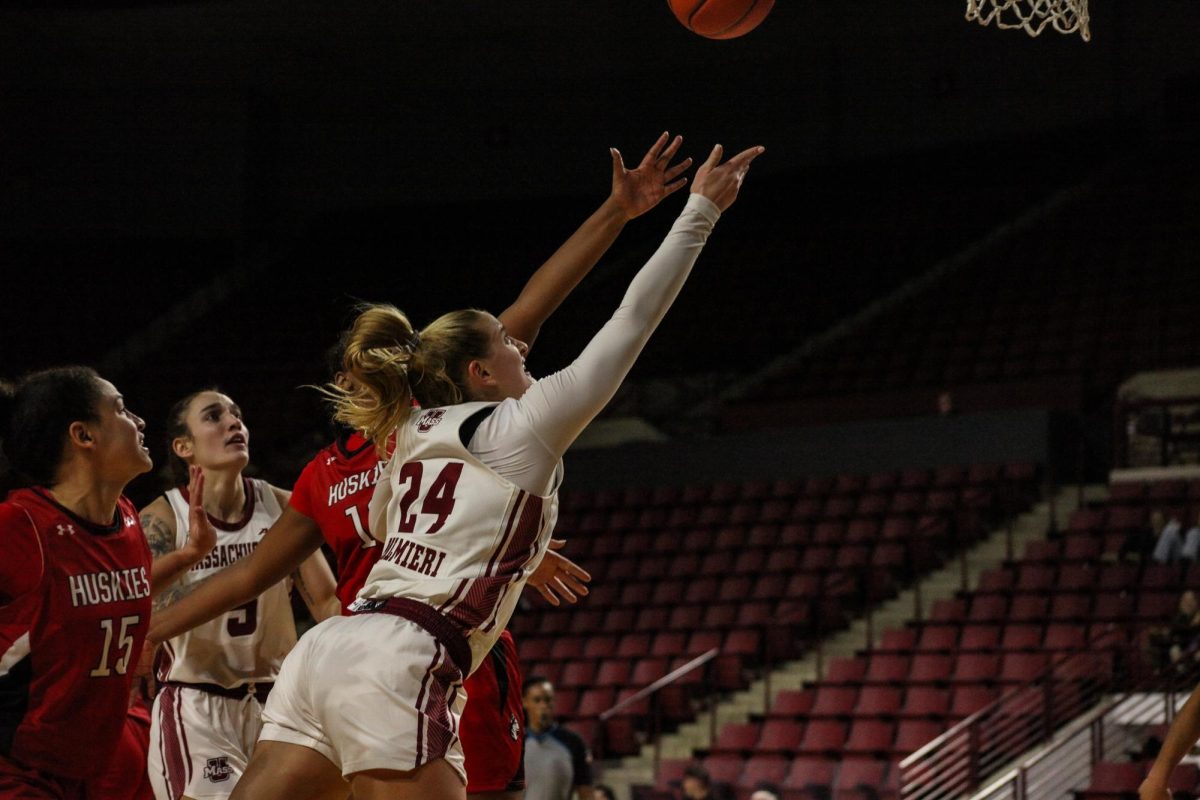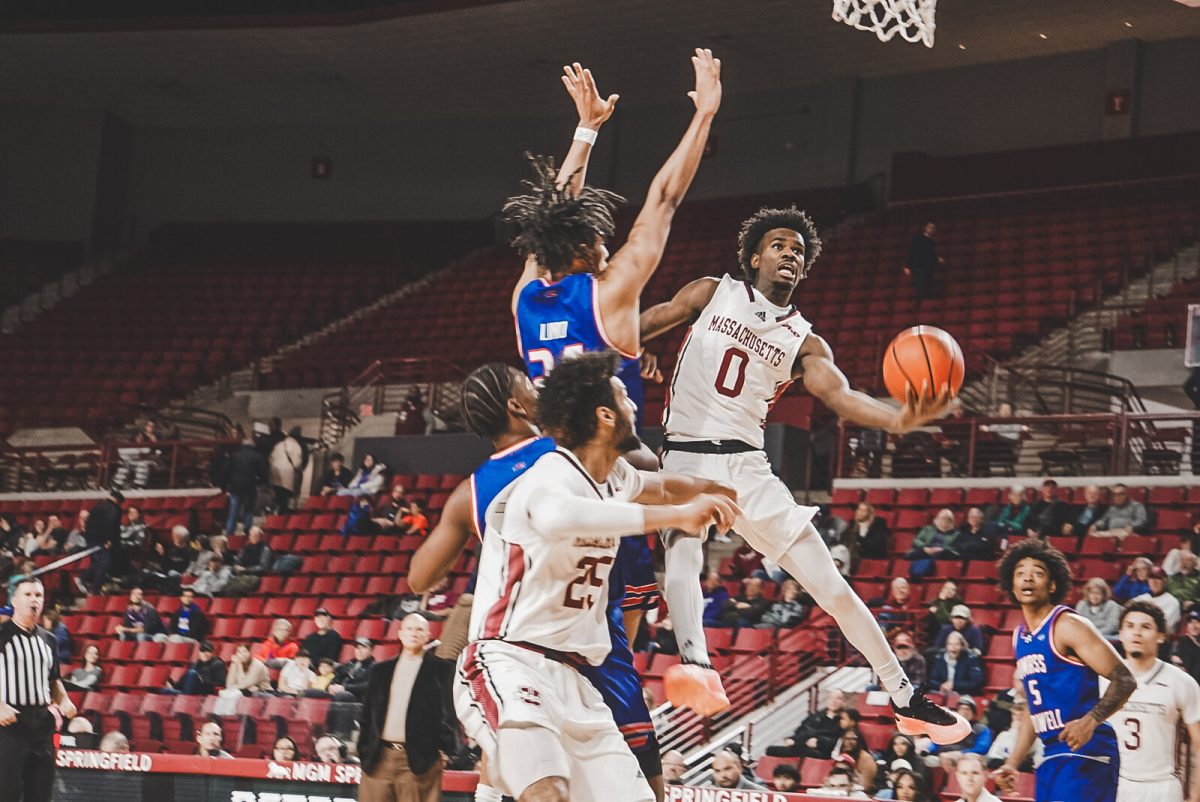Concluding the “Sister: Resisters” Lecture Series, the University of Massachusetts Black Women United (BWU) initiative hosted its final workshop titled “What to Do and What to Avoid When Mentoring Black Women Effectively” on April 19 in the Lederle Graduate Research Center.
BWU is supported by the ADVANCE Mutual Mentoring Grant and seeks to “build and maintain a network of Black women peers…and create environments where diversity is encouraged and supported,” according to their website. The team is composed of institutional leaders from numerous departments across campus, including Cheryl Swanier, Felicia Griffin Fennell, Judyie Al-Bilali, Sofiya Alhassan and Maria Rios.
Facilitators Janie Victoria Ward and Tracy Robinson-Wood led Black women in faculty, staff and administrative positions to examine strategies for mentorship and community-building.
Ward, professor emerita in the Department of Critical Race, Gender and Cultural Studies at Simmons University co-authored the book “Sister Resisters: Mentoring Black Women on Campus” in 2022 with Robinson-Wood, professor of Applied Psychology at Northeastern University.
Sharing insights from their book, Ward and Robinson-Wood presented an overview on research, case studies and narratives focused on the challenges Black women encounter in higher education.
After meeting as young doctoral students at the Harvard Graduate School of Education, the authors reflected on their own experiences, emphasizing the limited representation of Black women in academia. Conversations about the difficulties of career development and finding support within professional and personal contexts were the backbone of their “resistance” mentoring model.
“We come from a developmental psychology background and came out of a program… surrounded by Black peers who were always encouraging us to speak [to challenges] as well [as] to the strengths.”
Ward and Robinson-Wood began developing the concept of resistance in the late 1980s. Through interdisciplinary research, Ward and Robinson-Wood examined how Black women respond and push back against systems of oppression, as present in higher education.
“We know that it is a space where Black women will encounter coloniality,” Robinson-Wood said. “They will encounter white supremacy. They will encounter caste. They will encounter patriarchy. I don’t believe you can be a Black woman in the academy and not experience these things.”
Focusing on the experience of Black women academics at predominantly white institutions, Ward and Robinson-Wood’s use of the term “sisters” in their book refers to white women, who are most often working in counseling, student affairs, career development and other professions requiring different forms of mentorship.
“Very often, white women are either assigned to do this work or they volunteer to do this work, and therefore the work becomes cross racial mentoring,” Ward said.
Ward and Robinson-Wood expanded this term to include any individual not of African descent working with women of African descent in a mentorship capacity. Expanding on the role mentors not of African descent could play to combat gendered racism in academia, Ward emphasized greater commitment to recognize lived experiences.
“There is no monolithic Black woman’s experience,” Ward said. “When we say Black, we want you to be thinking about the diversity that exists within that community.”
As such, Robinson-Wood spoke of building intersectional understanding through dialogue, to strengthen trust between mentor and mentee for more honest relational work.
“An intersectional approach honors the fact that [in] certain contexts you might feel safe in some spaces, and then you can walk down the hall, depending on who’s there and who’s in charge, where it’s a very different dynamic,” Robinson-Wood said.
Mentorship can exist in formal and informal settings. Ward drew the distinction between more individualistic Western psychology and “relational psychology.” Speaking to the impact of social and cultural influences on emotional well-being, Ward clarified how effective mentorship should consider external drivers of sense of self.
“What we are talking about is a psychology that looks at the relationship,” Ward said. “It looks at the individuals who are involved in the interaction and understanding that sometimes just one individual with another individual is not enough.”
As such, the resistance framework is further separated into “optimal” and “suboptimal” resistance. Strategies for optimal resistance, as Ward says, are centered around nurturing development, while pushing back against emotional and physical stressors often aggravated by negative assessments of Black women’s abilities and position in higher education.
“So often with women, we are told that we are too emotional,” Ward said, adding that paying attention to emotion is often challenging against expectations where “in the University, [it] is about intellect.”
Short-term responses characterize suboptimal resistance strategies, which are more “reactive,” according to Robinson-Wood. Other characteristics of sub-optimal resistance include a reliance on validation from others, which are not sustainable in the long-term, Ward says.
“Those are the kinds of thought patterns that we really want people to confront and interrupt,” Ward said. “Because if you don’t, you can… react out of a position of… deficit as opposed to reacting from a position of strength.”
Ward concluded that building camaraderie, not only between Black women, but amongst people of color in academia can help create more robust networks of mentorship that are sensitive to individual and shared goals.
Catharine Li can be reached at [email protected].




















